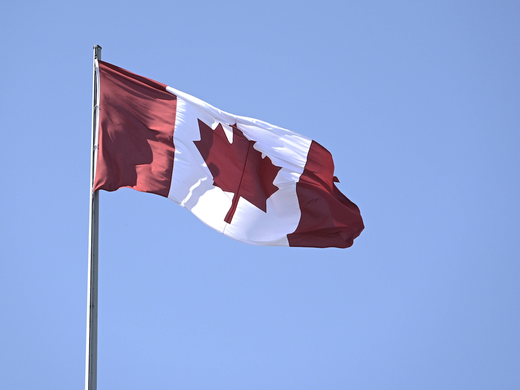Donald Trump has stated his intent to impose 25-percent tariffs on all imports from Canada on his first day in office. Let’s consider what we did the last time Trump imposed tariffs on Canadian exports.
In 2018, Trump imposed tariffs on Canadian exports of steel and aluminum under the national security provision (section 232) of the US Trade Expansion Act of 1962. Canada retaliated tit-for-tat, and the American tariffs were withdrawn under a deal that put a ceiling on increases in Canadian exports.
Canadian officials have indicated they will follow the same route this time, presumably by singling out pain points in the US economy and society to generate internal pressure to force Trump to withdraw the US tariffs, presumably with a face-saving bargain, just like last time.
But that is not the correct response — because this time is different.
Implementing tariffs and border costs in today’s globally integrated production system is to effectively score own goals, as illustrated by three major episodes in recent history where countries have done so in the pursuit of economic sovereignty: Brexit, the United States’ section 232 tariffs on steel and aluminum, and the United States’ section 301 tariffs on China (using another statute, the Trade Act of 1974).
Britain’s departure from the European Union increased its trade costs. The results were border chaos, delays and shortages; labour market mismatches; increased bureaucracy; and, most importantly, reduced participation of small firms in trade.
As Canada well understands, static productivity growth, lagging innovation, stagnating per capita income growth, and the failure of firms to scale constitute a pernicious nexus of economic ills. In fact, they are simply different facets of one and the same problem — namely, the inability to scale firms. Engagement in trade enables companies to grow, drives innovation and fuels productivity gains, and the converse is also true. Britain harmed its own economy by raising barriers to trade with its major trading partner.
The US section 232 tariffs, meanwhile, were ostensibly intended to bolster critical heavy industries in America. As the recently nixed takeover bid by Tokyo-based Nippon Steel of the struggling United States Steel company starkly revealed, that did not work. Meanwhile, downstream industries in the United States, including the auto sector, were materially harmed with higher input costs.
US section 301 tariffs, which were motivated by America’s enormous bilateral trade deficit with China, did eventually crimp trade with China, as firms reshuffled trade through third countries. But the tariffs did not reduce America’s total foreign trade deficit — it actually widened substantially. Worse, the complications for US firms generated by these tariffs led to tens of thousands of applications for exemptions.
If Canada retaliated against a 25-percent blanket tariff on imports, it would generate these same problems for Canada on top of the damage that the US tariffs would wreak in the first place. Indeed, our self-own would be more costly to us than the United States’ economic assault. Such a move would only make sense if we had confidence that it would restore sanity to American trade policy.
But there are no grounds for such confidence. A fundamental shift in US trade policy is under way. Emerging US policy is challenging the very foundations of the economics of international trade; it argues that globalization has been bad for America, treats foreign country trade surpluses in bilateral trade — notably Canada’s — as a “rip-off,” and singles out the integration of China into global trade as a particularly egregious mistake.
So how should we respond, if not with tit-for-tat retaliation?
First, we must prepare to ride out the Trump Disturbance as we rode out the COVID-19 pandemic: by strengthening our social safety net and rebuilding our infrastructure. We should treat it like the virus it is — and trust it will burn itself out. Tariffs affect material goods, so we can also focus on innovating and exporting intangibles, such as cybersecurity tools and AI applications — areas where Canada has the knowledge capital to support scaling up of firms.
This has the added advantage of forcing us to finally devote our industrial-policy resources toward leveraging our comparative advantage in technology. Stop the subsidization of foreign multinationals, which allows them to leverage their intangible assets, and redirect those subsidies to scale Canadian start-ups into Canadian giants. By doubling down on research and development, we can drive a new generation of Canadian firms.
We can learn from examples of successful coping with rough times. Cleveland-based Lincoln Electric — a long-time Fortune 1000 company — has survived and thrived in America’s Rust Belt, earning a reputation for retaining employees during downturns and reinvesting in research and development.
In short, Canada should take a page from the best America has to offer, to fight off the worst.
This piece first appeared in The Globe and Mail.



